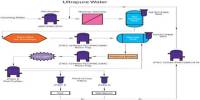The morphology of some grasses, including wheat, rice, barley, and sorghum, has changed as a result of domestication for human use over time. Awns, the bristle- or needle-like appendages emerging from the tip of the lemma in grass spikelets, are one such change that can be made in part or whole.
The awn aids in photosynthesis in grasses like barley and wheat, facilitates seed distribution, and safeguards grains from predators. However, it also makes hand harvesting more difficult and lowers the value of the plant as cattle fodder, which explains why it was eliminated during domestication.
An awn is a needle-like structure found in grass species that is genetically controlled to be present or absent in plants. Sorghum is a cereal that is popularly consumed all over the world, although this process is little understood in it.
Inhibiting awn elongation in sorghum is now known to be caused by the gene known as “DOMINANT AWN INHIBITOR” (or DAI). Their research offers fresh perspectives on the common mechanisms behind awn inhibition in a range of cereal crops.
Genetic research has previously identified the process underpinning awn growth in cereals like rice and wheat. These point to the potential presence of intricate genetic networks that are unique and influence awn formation in a species-specific manner.
In fact, an awn-inhibiting gene was discovered in sorghum in 1921, but it remained uncharacterized after that. Finally, this topic has been clarified by a team of researchers led by Prof. Wataru Sakamoto of Okayama University and included Prof. Hideki Takanashi of the Graduate School of Agriculture and Life Science, Tokyo University. On May 30, 2022, their study was released in Plant & Cell Physiology.
Justifying the rationale behind studying awn inhibition in sorghum, Prof. Sakamoto says, “Sorghum is an important C4 crop for high biomass and bioenergy. It has a high tolerance to drought, besides being the fifth largest cultivated cereal crop. Also, it is a morphologically diverse crop with a relatively small genome size, making it suitable for genetic studies in various agronomical traits.”
It was surprising that DAI also inhibits awn elongation in rice grains, because no such genes have been reported in rice. Thus, eliminating awns in cereal grains have occurred differently among cereal crops, but the mechanism can be shared between them.
Prof. Wataru Sakamoto
A recombinant inbred population was produced for the investigation by crossing “awnless” (BTx623) and “awned” (Takakibi NOG) sorghum types.
“The prospect of gene hunting in sorghum using the population we generated for the last ten years was motivating,” comments Prof. Sakamoto.
The scientists created a high-density genetic map of this recombinant crop using next-generation sequencing. To find the gene governing awn development, they then conducted quantitative trait loci analysis on the germplasm of the sorghum plant. To pinpoint the gene’s ancestors and locate the awn-inhibiting gene, they also carried out genome-wide association studies.
In order to test if the awn-inhibiting gene works in other grass species, the researchers added it to an awned rice cultivar. The researchers noticed that, like their awnless parent, almost half of the recombinant cultivar population investigated did not develop awns.
They also discovered that a single locus on the cultivar chromosome controlled the absence and shortening of awns in the cultivars them tested. They identified DOMINANT AWN INHIBITOR, or DAI, as the gene corresponding to this location.
The scientists discovered that DAI encodes a protein of the ALOG family that functions as a transcription factor to negatively regulate the production of awns. It’s interesting to see that DAI inhibited awn formation in the rice cultivar with awns.
In the words of Prof. Sakamoto, “It was surprising that DAI also inhibits awn elongation in rice grains, because no such genes have been reported in rice. Thus, eliminating awns in cereal grains have occurred differently among cereal crops, but the mechanism can be shared between them.”
In conclusion, this work has demonstrated the significance of DAI in the advancement of contemporary awnless cultivars.
Additionally, despite the presence of species-specific inhibitors, it suggests the existence of a common mechanism of awn inhibition. Beyond defining the relationship between DAI and the domestication of sorghum, more research is required to comprehend the transcriptional regulation of DAI.
As Prof. Sakamoto points out, “In the long term, the understanding of genetic traits affecting cereals can help us in making new varieties.”
















